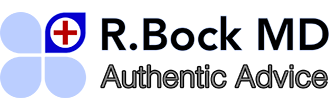

!function(r,u,m,b,l,e){r._Rumble=b,r[b]||(r[b]=function(){(r[b]._=r[b]._||[]).push(arguments);if(r[b]._.length==1){l=u.createElement(m),e=u.getElementsByTagName(m)[0],l.async=1,l.src=”https://rumble.com/embedJS/u4″+(arguments[1].video?’.’+arguments[1].video:”)+”/?url=”+encodeURIComponent(location.href)+”&args=”+encodeURIComponent(JSON.stringify([].slice.apply(arguments))),e.parentNode.insertBefore(l,e)}})}(window, document, “script”, “Rumble”);
Rumble(“play”, {“video”:”vie7y6″,”div”:”rumble_vie7y6″});
In the whirlwind of information, misinformation, and uncertainty surrounding the COVID-19 pandemic, it’s essential to cut through the noise and focus on a rational, scientific approach. This article will be your guide to understanding the importance of this approach, avoiding conspiracy theories, and making informed decisions. Let’s embark on this journey together.
Table of ContentsEmbracing a Scientific ApproachQuestioning the Effectiveness of Non-Medical InterventionsRisks and Benefits of VaccinationDistinguishing Between Scientific Hypotheses and ConspiraciesAppreciating the Effort of Data AnalysisConclusion: Navigating the Pandemic with ScienceFAQs: Answering Your Burning QuestionsRelated Articles:
Embracing a Scientific Approach
Imagine the fight against the COVID-19 pandemic as a puzzle. The first piece to solve this puzzle is embracing a scientific approach. This means setting the stage for rational conversations based on data-backed hypotheses. But how do we distinguish a valid scientific hypothesis from mere guesswork?
A valid scientific hypothesis isn’t a wild guess. It’s like a well-prepared recipe with precise measurements and ingredients. In the same way, a scientific hypothesis is crafted with meticulous attention to detail and supported by solid data. This is the foundation for informed decisions and discussions.
Questioning the Effectiveness of Non-Medical Interventions
It’s common to hear about non-medical interventions, such as homemade remedies and alternative treatments. But is there any substantial evidence supporting their effectiveness? This is a critical question we need to address.
Consider this: would you build a house without a solid foundation? Non-medical interventions should be approached with the same scrutiny. The lack of substantial evidence is like a shaky foundation, potentially causing harm. It’s crucial to critically assess these interventions, ensuring they don’t crumble when faced with scientific scrutiny.
Risks and Benefits of Vaccination
Vaccination has been a major player in the fight against COVID-19. However, it’s not a one-size-fits-all solution. Age plays a pivotal role in determining whether the benefits of vaccination outweigh the risks. It’s like choosing the right tool for the job.
For individuals under 25, the document suggests that the vaccine may pose more risk than the virus itself. This highlights the need for a personalized approach to vaccination. Just as you wouldn’t use a sledgehammer to hang a picture frame, we shouldn’t apply the same vaccination strategy to all age groups.
Distinguishing Between Scientific Hypotheses and Conspiracies
In the vast sea of information, there are islands of genuine scientific hypotheses and rocky shores of conspiracy theories. How do you navigate these treacherous waters?
Think of it this way: a scientific hypothesis is like a lighthouse guiding ships safely to shore, while conspiracy theories are like sirens leading them astray. Engaging in constructive scientific discussions means recognizing that even if a hypothesis is later proven wrong, it’s still a legitimate part of the scientific process. This approach sets us on the right course.
Appreciating the Effort of Data Analysis
Now, let’s take a moment to appreciate those who compile and present data. Think of them as architects and builders constructing a bridge of knowledge. This bridge allows us to traverse the river of uncerta…
Discover more from Randy Bock MD PC
Subscribe to get the latest posts sent to your email.


























